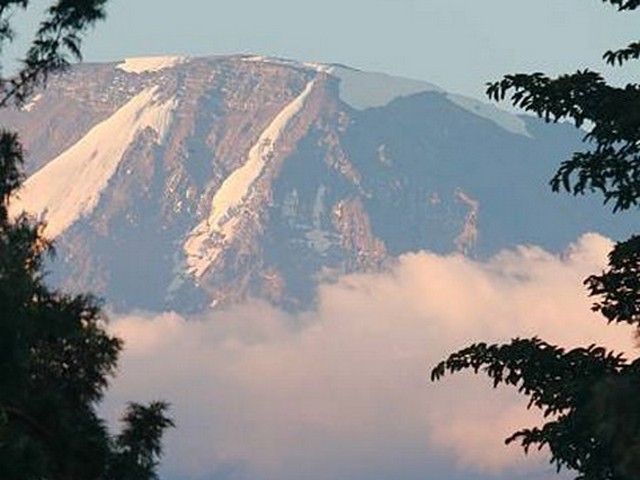Discover the Unique Wildlife on Kilimanjaro Trek with KCTE
Mount Kilimanjaro, a beacon of majesty that rises above the East African plains, is not only famous for its snow-capped peak but also as a haven for diverse and unique wildlife. As you embark on a trek to the roof of Africa with the Kilimanjaro Centre for Trekking and Ecotourism (KCTE), prepare to immerse yourself in an ecological paradise that offers more than just breathtaking landscapes and challenging hikes. In this journey, every step brings you closer to an intimate encounter with nature’s wonders, beautifully preserved in one of the world’s most cherished national parks.
The Call of the Wild: Why Kilimanjaro’s Wildlife Is Unique
Mount Kilimanjaro is not just another mountain; it’s a vibrant ecosystem that supports a range of life forms adapted to its varying climates and altitudes. From lush rainforests at its base to alpine deserts near its summit, Kilimanjaro offers a series of unique habitats that are home to fascinating species, many of which are endemic to this area.
The Lower Slopes: A Birdwatcher’s Paradise
Venture into the montane forests that cloak the lower altitudes of Kilimanjaro and find yourself in a birdwatcher’s paradise. Here, the air is filled with the melodious calls of the Hartlaub’s turaco, a vibrant bird with striking green and blue plumage. Another feathered friend to look out for is the Kilimanjaro white-eye, known for its distinctive white eye-ring and cheerful chirp. These forests are also home to the elusive African golden cat, a shy feline seldom seen by the casual observer but a thrilling sight for the lucky few.
The Heath and Moorland: Where Giants Dwell
As you ascend, the dense forest gives way to the heath and moorland zones. This is the realm of the giant groundsels and lobelias, surreal plants that look like they belong in a science fiction landscape. Amid these botanical giants roams the Kilimanjaro tree hyrax, whose ancient lineage is as remarkable as its ability to thrive in such sparse vegetation. The loud calls of this small, furry creature during the night are an unforgettable part of the Kilimanjaro trekking experience.
The Alpine Desert: A Study in Survival
The air grows thinner and the landscape more austere as you enter the alpine desert zone. Here, life is sparse, but even in this harsh environment, you can encounter species that have adapted remarkably to the extreme conditions. The four-striped grass mouse, for example, forages among the rocks and tussocks, while overhead, the lammergeier vulture may be seen gliding majestically, scanning the rugged terrain for opportunities.
The Summit: The Realm of Eagles and Ravens
Reaching the summit zone of Kilimanjaro, you are entering an area where few species can survive. Yet, the White-necked raven and the Verreaux’s eagle have made these heights their home, soaring high above the clouds. These birds have mastered the art of living at high altitudes, and witnessing them in flight is a fitting reward for the arduous trek.
Why Book Your Kilimanjaro Trek with KCTE?
At the Kilimanjaro Centre for Trekking and Ecotourism, we pride ourselves on providing immersive and sustainable trekking experiences that not only challenge and inspire but also deepen your understanding of the natural world. Our expert guides are passionate about wildlife and are eager to share their knowledge and love for these mountains with you. By choosing KCTE, you are also supporting local conservation efforts that help preserve this magnificent mountain and its inhabitants for future generations.
Preparing for Your Trek: Tips and Insights
Embarking on a trek up Kilimanjaro is a formidable adventure, and seeing the unique wildlife is an integral part of the experience. Here are some tips to enhance your chances of wildlife encounters:
- Keep Quiet and Observant: Wildlife is often shy and sensitive to noise. Move quietly and keep your eyes peeled.
- Use a Good Pair of Binoculars: Many animals and birds are best seen from a distance; a good pair of binoculars will bring them closer.
- Follow Guidelines: Always stick to the paths and listen to your guides. This ensures your safety and protects the habitat you’re exploring.
Frequently Asked Questions
Q: What is the best time of year to see wildlife on Kilimanjaro?
A: Wildlife viewing on Kilimanjaro can be enjoyed year-round, but the dry seasons from June to October and January to March offer the most comfortable trekking conditions.
Q: Are there any dangerous animals on Kilimanjaro?
A: Kilimanjaro is generally safe from dangerous wildlife. However, it’s important to listen to your guide and follow park rules to ensure your safety.
Q: How physically fit do I need to be to enjoy a wildlife trek on Kilimanjaro?
A: While you don’t need to be an athlete, a moderate level of fitness will greatly enhance your comfort and enjoyment of the trek.
Q: Can I take photographs of the wildlife?
A: Yes, photography is encouraged, but always respect the wildlife and maintain a safe and respectful distance.
Concluding Thoughts
A trek up Mount Kilimanjaro with KCTE isn’t just a physical journey; it’s a voyage through a living museum of nature’s finest exhibits. Each step offers a new discovery, each breath a deeper connection with the earth. Ready to embark on this unforgettable adventure and witness the unique wildlife of Kilimanjaro? Contact us at Kilimanjaro Centre for Trekking and Ecotourism today and take the first step towards the adventure of a lifetime.




